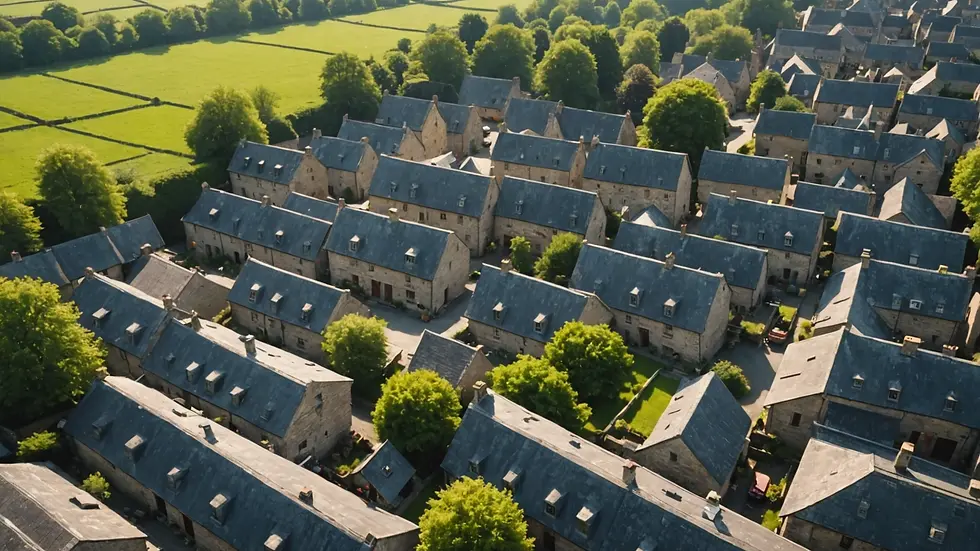Slate roofing has long been celebrated for its elegance and resilience, yet its popularity in the UK often evokes mixed feelings. For homeowners contemplating a new roof, understanding the benefits and drawbacks of slate can guide them in making a smart choice.
What is Slate Roofing?
Slate roofing consists of natural stone that is mined, cut, and treated into tiles for installation on roofs. Known for its impressive lifespan and visual appeal, slate has held a prominent place in UK architecture for centuries. However, like any material, it comes with its own set of pros and cons that should be carefully considered.
Advantages of Slate Roofing
1. Durability and Longevity
A significant advantage of slate roofing is its durability. Slate roofs can last over 100 years, far exceeding the typical lifespans of materials like asphalt shingles, which last around 20 years. This exceptionally long lifespan makes slate an attractive investment for homeowners looking to avoid frequent roof replacements.
2. Aesthetic Appeal
Slate roofs offer striking beauty. Available in colors such as grey, blue, green, and black, homeowners can select a style that enhances their home's unique character. According to design experts, homes with slate roofs can see an increase in property value as much as 10% due to the high-end appearance and quality.
3. Low Maintenance Requirements
After installation, slate roofing requires very little maintenance. Unlike materials that often need regular repairs, slate is resistant to common roofing issues such as rot, pests, and mold. This can save homeowners both time and money in the long run.

4. Energy Efficiency
Slate possesses natural insulating properties, helping to maintain a comfortable indoor temperature. By improving insulation, homeowners can potentially reduce energy costs by up to 20%. This factor is especially appealing for those interested in sustainable living.
5. Fire Resistant
As a non-combustible material, slate provides excellent protection against fire, making it a safer option for homeowners in areas prone to wildfires. In some cases, insurance companies may offer reduced premiums for homes with slate roofing due to its fire resistance.
6. Environmentally Friendly Option
Since slate is a natural material, it is often regarded as an environmentally friendly choice. Its lengthy lifespan means it contributes to less landfill waste compared to other materials that need more frequent replacements.
Disadvantages of Slate Roofing
1. High Initial Cost
One of the most significant disadvantages of slate roofing is the high initial investment. The costs of slate tiles and their installation can be anywhere from £100 to £150 per square meter, making it substantially more expensive than alternatives like asphalt shingles, which can cost as little as £40 per square meter. This upfront expense may deter many potential buyers.
2. Weight Considerations
The weight of slate tiles can be a concern. They are much heavier than other roofing materials, often requiring additional structural support. Many older homes may lack the necessary framework, necessitating costly renovations before installation.
3. Installation Challenges
Installing slate roofing requires specialized skills to ensure proper alignment and sealing. Finding contractors experienced in slate installation can be a challenge, leading to higher labor costs. This expertise is crucial, as improper installation can lead to leaks and other issues down the line.

4. Brittle Nature
Though durable, slate tiles can be brittle and may chip or break under extreme weather or heavy foot traffic. Homeowners should be cautious during maintenance to prevent damage.
5. Limited Repair Options
If a slate tile breaks, finding a matching replacement can be complicated. Ensuring an effective installation of the new tile can be tricky, especially if the same tile is no longer being produced.
Evaluating Slate Roofing
Deciding on slate roofing in the UK hinges on personal preference and specific situations. For homeowners prioritizing quality, longevity, and visual appeal, slate may be an excellent fit. Those willing to invest in their property for years of durability might find slate worth the cost.
Conversely, for budget-conscious individuals or those preferring lightweight materials that are easier to install, alternatives such as tile or metal roofing may be more appropriate.
Final Thoughts
In conclusion, slate roofing offers a distinctive mix of advantages and disadvantages that can greatly impact your decision. Its unmatched durability, beautiful appearance, and low maintenance requirements make it a strong contender for high-quality roofing.
However, potential drawbacks such as cost, weight, and installation difficulties may present challenges. Weighing these factors objectively will empower homeowners to make the best choice for their needs and budget.

By considering the pros and cons of slate roofing, UK homeowners can approach their roofing project with a clearer perspective, resulting in a well-informed investment in their home’s future.




Comments